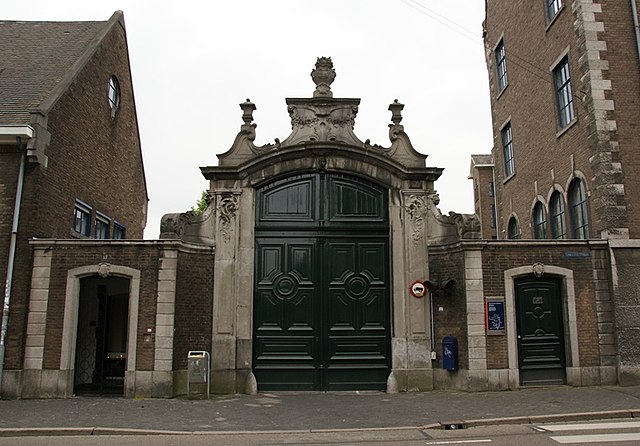
What began as a bold initiative in a city without a university gradually developed into a notable contribution to Dutch higher education. In 1974, fifty students enrolled as “course participants” in an institution that, at the time, existed only on paper. That vision took formal shape on January 9, 1976, when Queen Juliana signed the official charter establishing Rijksuniversiteit Limburg (Observant, 2021). It marked the realisation of Limburg’s long-standing ambition to host a university of its own. Yet this founding moment was only the beginning. Two decades later, in 1996, the university adopted a new name: Universiteit Maastricht (since 2008 officially referred to as Maastricht University in English).

The Gate of the Former Jesuit Monastery. Now the Entrance to Maastricht University’s School of Business and Economics (Otter, 2010)
This shift represented more than a rebrand. It reflected a growing international outlook and a desire to evolve beyond its regional origins. While remaining grounded in Limburg, the university embraced a broader European focus, strengthening international collaboration and contributing to regional renewal following the coal industry’s collapse. The balance between global ambition and local engagement became central to its identity (Letschert, 2023). This moment marked the start of a new chapter that would define how the university positioned itself in the world.
The university aimed to become a “knowledge center of a new style,” known for internationalization and educational innovation. Its early embrace of Problem-Based Learning (PBL) challenged conventional methods and helped define what became known as The Maastricht Experiment (Knoops, 2024). This transformation laid the foundation for a globally connected institution, focused on cross-disciplinary collaboration and innovative learning that continues to shape its development.

Reunion Group Photo of Rijksuniversiteit Limburg’s First Students (Haemers, 2025)